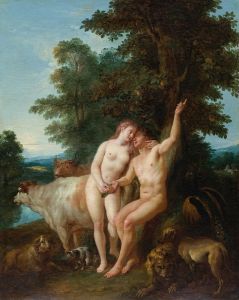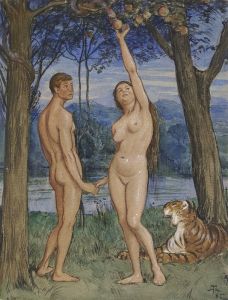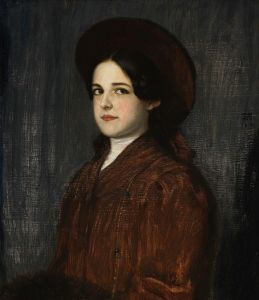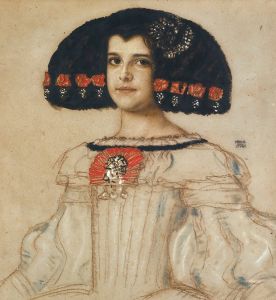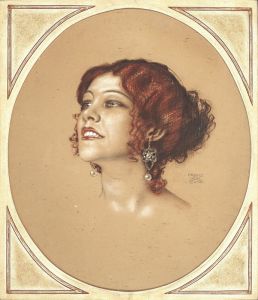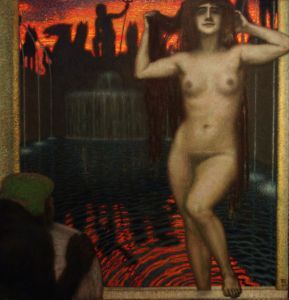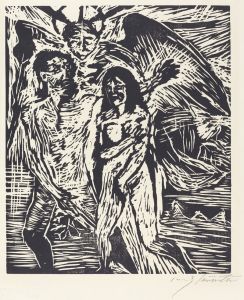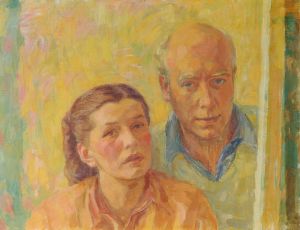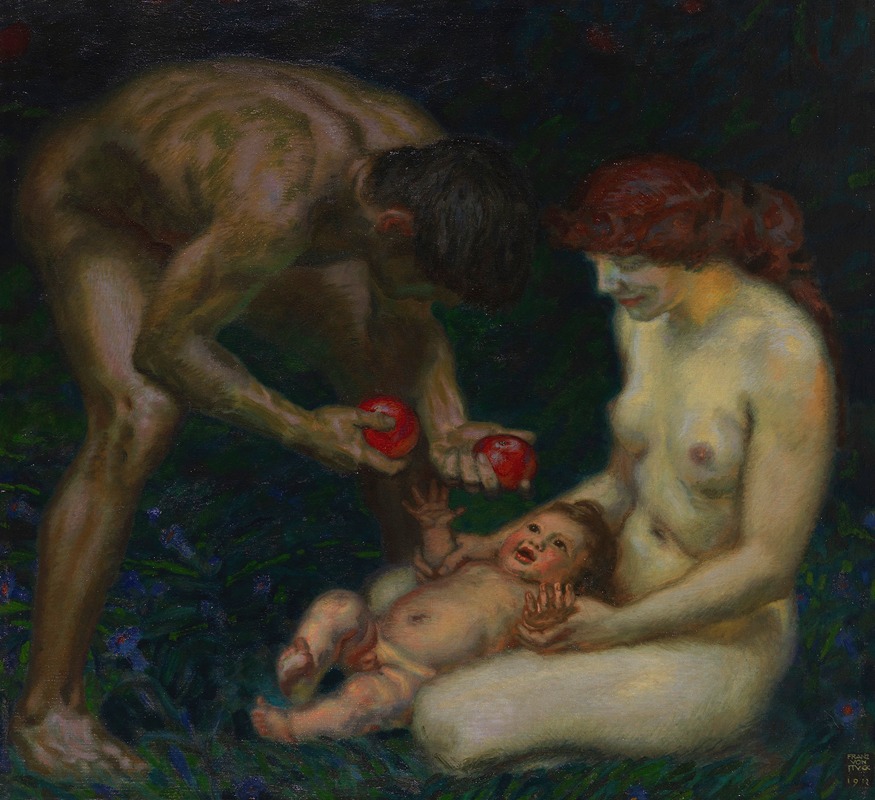
Adam und Eva
A hand-painted replica of Franz von Stuck’s masterpiece Adam und Eva, meticulously crafted by professional artists to capture the true essence of the original. Each piece is created with museum-quality canvas and rare mineral pigments, carefully painted by experienced artists with delicate brushstrokes and rich, layered colors to perfectly recreate the texture of the original artwork. Unlike machine-printed reproductions, this hand-painted version brings the painting to life, infused with the artist’s emotions and skill in every stroke. Whether for personal collection or home decoration, it instantly elevates the artistic atmosphere of any space.
Franz von Stuck's painting "Adam und Eva" is a notable work by the German symbolist artist, created in 1920. Stuck, who was a prominent figure in the Munich Secession movement, is well-known for his mythological and allegorical subjects, often imbued with a sense of mysticism and eroticism. "Adam und Eva" is a prime example of his exploration of biblical themes through a symbolist lens.
The painting depicts the biblical figures of Adam and Eve, the first man and woman according to Judeo-Christian tradition. Stuck's interpretation of this iconic duo is characteristic of his style, blending classical influences with a modern sensibility. The figures are portrayed in a lush, Edenic setting, surrounded by an abundance of foliage that suggests the Garden of Eden. This setting is typical of Stuck's work, which often features rich, detailed backgrounds that enhance the narrative quality of his paintings.
In "Adam und Eva," Stuck captures the moment of temptation and the fall of man, a theme that has been a rich source of inspiration for artists throughout history. The figures are depicted in a moment of intimacy and contemplation, with Eve holding the forbidden fruit, a symbol of knowledge and transgression. Stuck's use of light and shadow adds a dramatic tension to the scene, highlighting the moral and existential themes inherent in the story.
Stuck's style is marked by a strong use of line and form, and in "Adam und Eva," he employs these elements to create a sense of harmony and balance between the figures and their environment. The painting reflects Stuck's interest in the human form and his ability to convey complex emotions and ideas through his art. His work often explores themes of desire, sin, and redemption, and "Adam und Eva" is no exception.
The painting is also notable for its use of color, with a palette that includes deep greens, earthy browns, and flesh tones that lend a naturalistic quality to the scene. Stuck's attention to detail is evident in the rendering of the figures' anatomy and the intricate depiction of the surrounding flora. This meticulous approach is a hallmark of his work and contributes to the painting's enduring appeal.
"Adam und Eva" is housed in the Stuck Villa in Munich, which was the artist's residence and studio. The villa is now a museum dedicated to Stuck's life and work, offering visitors a comprehensive view of his artistic achievements. The painting is part of a larger collection that showcases Stuck's contributions to the symbolist movement and his influence on early 20th-century art.
Franz von Stuck's "Adam und Eva" remains an important work within the canon of symbolist art, reflecting the artist's unique vision and his ability to reinterpret classical themes for a modern audience. Through this painting, Stuck invites viewers to contemplate the complexities of human nature and the timeless narrative of temptation and fall.





